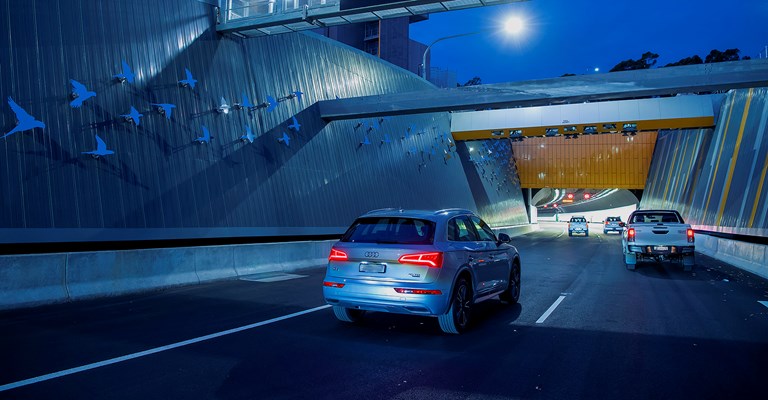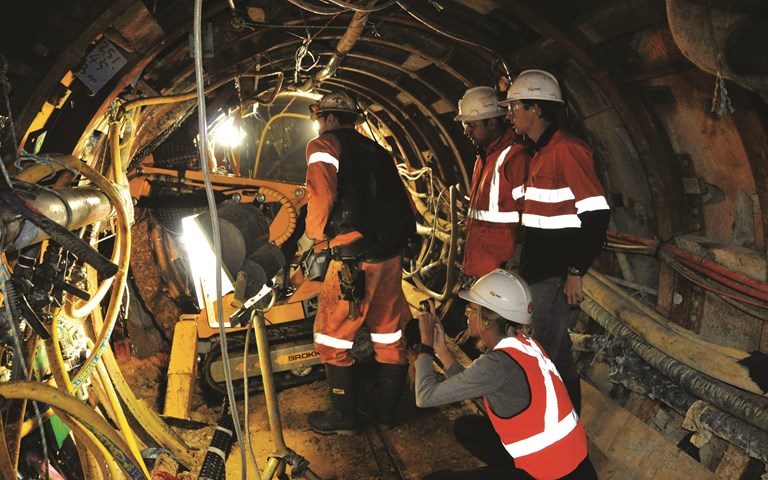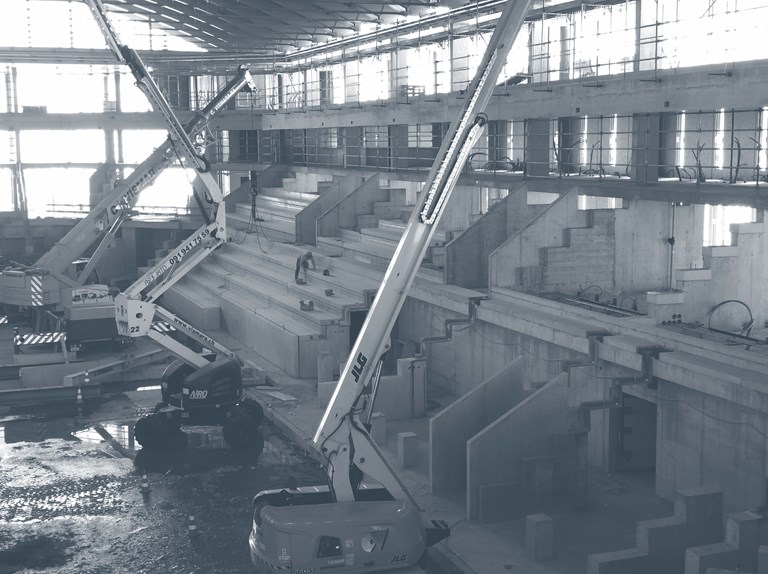
Switzerland-Australia, in the name of the tunnels
An underground hydroelectric power station, 700 metres underground, capable of producing thousands of megawatts by piping water from surface reservoirs through 27 kilometres of tunnels. Road tunnels crossing one another in the heart of a metropolis. These are some of the projects that are becoming a reality in Australia. As in other high-engineering solutions that are gaining ground in the land of kangaroos, there is the contribution of knowledge gained in Switzerland.
Bringing Swiss know-how to the other side of the world was Sabrina Kost. She has been living with her husband and two children in Sydney for 13 years, but her adventure in the world of design began in Ticino. We interviewed her to find out what it’s like to live and work on the fifth continent.
Which company do you work for?
“I work for SMEC Australia (Member of the Surbana Jurong Group). SMEC is a global consulting firm. I am personally located in the Sydney Office. SMEC is an engineering consultancy firm. In Australia, SMEC’s core service offering covers the lifecycle of a project across urban renewal, transport design and energy sectors, providing specialist expertise and technology-driven solutions across road, rail, aviation, greenfield communities, hydropower and solar energy, geotechnics and tunnelling, environmental services and asset management.“
What position do you have in the company?
“I am a Principal Tunnel Engineer and currently also Managing the Tunnels Team in Sydney in an acting capacity.“
What projects did you participate in?
“I’ve worked on some of the most complex and diverse projects in Australia including the iconic Snowy 2.0, the WestConnex Works, the multi-award-winning Sydney Metro City and South West Tunnels Stations and Excavations (TSE), NorthConnex, Legacy Way, Melbourne Brisbane Inland Rail (MBIR) and the Adelaide Desalination Plant. A big focus for me personally at the moment is Snowy 2.0, the largest committed renewable energy project in Australia, which is not only extremely rewarding but also technically stimulating. Snowy 2.0 is of national importance and will shape the future of the country’s renewable energy strategy which I am really proud to be a part of.
I’m also involved as a subject matter expert for Transport for New South Wales on Sydney’s Rozelle Interchange (part of the Westconnex Project Works). The Rozelle Interchange project is a unique and very complex underground motorway interchange, forming the centre piece of Sydney’s future road network. The biggest challenge on this project is having multiple tunnels crossing over each other in a very small area underneath the city.”
What are some of the construction peculiarities of the projects?
“Snowy 2.0 is the next generation of the iconic Snowy Mountains Hydroelectric Scheme, and construction of this major pumped-hydro project is well underway. Once complete, the Scheme will provide 2000 megawatts of dispatchable, on-demand renewable energy and approximately 350,000 megawatt hours of large-scale storage to the Australian National Electricity Market. The project involves linking two existing dams/reservoirs, Tantangara and Talbingo, through 27km of tunnels and building a new underground power station, at approximately 700m depth.
Water will be pumped to the upper reservoir when there is surplus renewable energy production and the demand for energy is low, and then released back to the lower reservoir to generate energy when electricity demand is high. It will provide flexible, on-demand power while reusing or ‘recycling’ the water in a closed loop and maximise the efficiency of renewables by using excess solar and wind energy to pump water, to be stored for later use.”
What is the situation in Australia respect to underground infrastructure?
“Australia is currently undergoing an unprecedented infrastructure spend and the government is investing heavily towards infrastructure. In NSW only, spending forecast is $107B to FY24, of which $72.2B is dedicated to Road and Rail projects. This represents a 50% increase in this sector compared to the FY20 forecast.
Some of the country’s largest infrastructure project include the $20 bn plus Sydney Metro program of works; Perth’s Metronet train line project; Brisbanes $45.4bn Cross River Rail; Melbourne’s $11bn Metro Tunnel project and $6.7bn West Gate Tunnel; and Sydney’s $17bn WestConnex project, billed as the biggest road project in the world – all heading towards completion within the next four years. With Australia’s population forecasted to reach 30 million as soon as 2029, Australia will continue to witness major infrastructure projects, such as these, transforming our cities.
Tunnel construction represents a vital part of these projects and is complimented by world-class feats of engineering. Due to the current situation of underground infrastructure being built, there is a generalised skills shortage, partly also due to the COVID border restrictions and Australia’s strict local hire requirements.“

When did you arrive in Australia?
“I moved to Australia (with my now husband) from Switzerland in 2008 and have worked for SMEC since then. Previous work involvements in Switzerland were with Edy Toscano (now AFRY) in Lugano/Rivera as a Structural Engineer.”
What motivated you to go to Australia?
“Initially the motivation was the work experience, the English language and the sunshine/beach and warmer weather. Ultimately my husband and I really fell in love with this country, with its amazing and abundant nature and wildlife, its beaches and with the life style that comes with it. Since arriving here, we have built an amazing network of friends that have become our 2nd family, we have become Australian Citizen and are raising two beautiful boys (9 & 7) that are tri-lingual, speaking Swiss German, French and English.”
What do you prefer about Australia?
“What I love about Australia is its casual-ness, its ease to make friends/connections and its family and kids’ friendliness. I also love the beautiful nature that surrounds us and keeps amazing us.”
What do you miss most about Switzerland?
“I most miss my family and best friends, with whom I am still in close contact. We do try to visit every 2 years or so, but COVID has obviously put a bit of a spanner into those plans. My parents and sister fortunately also pay us a visit every now and then, and luckily with social media and face time/skype, we do still feel very much connected to Switzerland. Our family language is French at home and I speak Swiss German to our children, as I want them to be able to talk to their grandparents and cousins!”
Is female professionalism adequately recognized?
“There is currently a big focus on promoting females in our industry and supporting them. In Australia, businesses are aiming at reducing the imbalance and are working hard on the gender equality agenda. SMEC is committed to developing and maintaining a workforce that respects the diversity of our clients we serve and the communities in which we operate. I was part of SMEC’s inaugural Inclusion and Diversity Committee, that has achieved the Employer of Choice Gender Equality Citation for SMEC (voluntary leading-practice recognition program designed to encourage, recognise and promote organisations’ active commitment to achieving gender equality in Australian workplaces) at the end of last year, of which I am very proud of.
In that sense, I guess it’s not a bad time to be a female professional in our industry right now, when a lot of effort is put into promoting and supporting us. However, I guess there is still a journey ahead of us, before we reach overall equality and recognition, independently of whether male or female.”
Are there any benefits for a career in engineering for women?
“As a woman in the engineering and particularly in the tunnelling field, I have obviously had to overcome some hurdles and probably had to prove myself more than a male equivalent would have had to prove himself. But ultimately, I think it is what made me stronger, more resilient and allowed me to become the underground expert and leader, I have grown into and I am proud to be today.
The journey I have gone through has also encouraged me to mentor and coach younger female engineers, something that I am really passionate about.“
Sabrina Kost Dubois
Year of birth: 1981
Profession: Civil Engineer
Sabrina grew up in St.Gallen in Switzerland and moved to Lausanne to study Civil Engineering at the Swiss Federal Institute of Technology Lausanne (EPFL) in 2001. She graduated with a Bachelor and Master of Science in civil engineering in 2006, and subsequently moved to Lugano to start with her first job as a Structural Engineer with Edy Toscano SA (now AFRY) in Lugano/Rivera. She moved to Australia (Sydney) in 2008, where she lives since then with her husband and two children (7 and 9yo.), enjoying life by the beach.
Since arriving in 2008, Sabrina has been involved in the design, planning & management of major complex underground infrastructure projects. She has experience in the design of tunnels, shafts and cavern linings in challenging ground conditions, ranging from hard rock to soft ground including subaqueous environments. Projects include TBM, roadheader, drill & blast pipe jacking and raise bore construction techniques. Sabrina also has a strong background in undertaking proof engineering, design review and compliance verification, certification roles and due diligence. Sabrina is also currently Group Manager of the Tunnels Team in Sydney in an acting capacity.
Playlist


